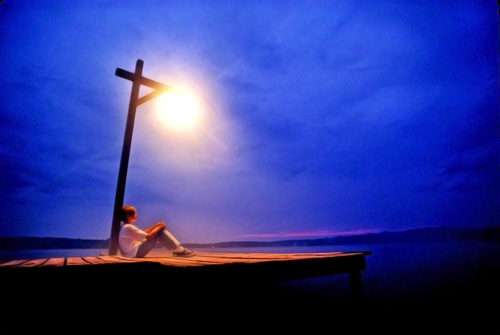Food For Digital Thought: Like a Moth to a Flame

For those of you that follow my blog, you’ll know that I put a lot of time into writing about the Light. You’ll also know that I always will say that Light is everything, unless you’re out street shooting and capturing the moment which can possibly be more important. Humor, is one other genre that can be as effective as beautiful light.
Having said this, that type of light is not the subject of this post. I’m talking about the light that can actually take away from your subject or center of interest. The light that’s not part of your main message but actually competes with it.
Over the past thirty-thee years of teaching my “Stretching Your Frame of Mind”workshops and in the six years of teaching my online classes with the BPSOP, I seen a lot of photos that demonstrates this phenomenon and have often brought it to the attention of all my fellow photographers.
Just like a moth to a flame, the viewer will be attracted to the brightest part of your composition whether its your subject or not. Just like a moth to a flame, we are drawn towards the light or in some instances the value of a color; value meaning the lightness or darkness of a color. It’s an unconscious effort because it’s inherent in our DNA.
To know the basic reasons is to take a look at human behavior. As a species, we are Diurnal. In simple terms we are day creatures, spending the majority of our waking hours in daylight. As a result, light is an instrument used for our survival; as in sitting close to the fire so the monsters won’t get to you….a residual belief from the pre-historic times when you could be eaten by a really big predator.
So back to my point about light taking valuable information away from your thought process. If you rely on the meter in your camera to make all your exposure decisions (a big mistake) you will undoubtedly run into this. You might have the right exposure on the subject in your foreground, but what about the exposure in the background?
What if you’re shooting under some trees, or in open shade where your subject just happens to be in the shadow. You might get lucky and have your subject exposed correctly but out where the sun is shining it’s three or more stops brighter…making it way too overexposed. The viewer will not look at your subject, he will be drawn to the overexposed area…the not-so-pretty part of your photo.
Changes in the light levels can be an indication that something has happened in the immediate environment. The viewer will rely on the perception of the environment that surrounds him and that’s why he will re-focus his attention on bright areas of light in our images.

As I said, the value of a subject can and will direct the viewers attention away from your subject. A good example would be a group of people in a photo and one of them has a very bright colored shirt on compared to all the others; that’s where the viewer will look.
It’s so important to remember my pearl of wisdom…the whole enchilada. It can become easy to concentrate so much on the message you’re trying to get across to the viewer that you fail to see other things that can take away from the same message you worked so hard to get.
There are some good things you can do with this scenario. By putting the light in just the right place or places you can get the viewer to interact with you. This is one way to get and keep the visual information that we lay out to the same viewer in the form of a photograph.
-BPSOP Instructor: Joe Baraban
Joe Teaches:










